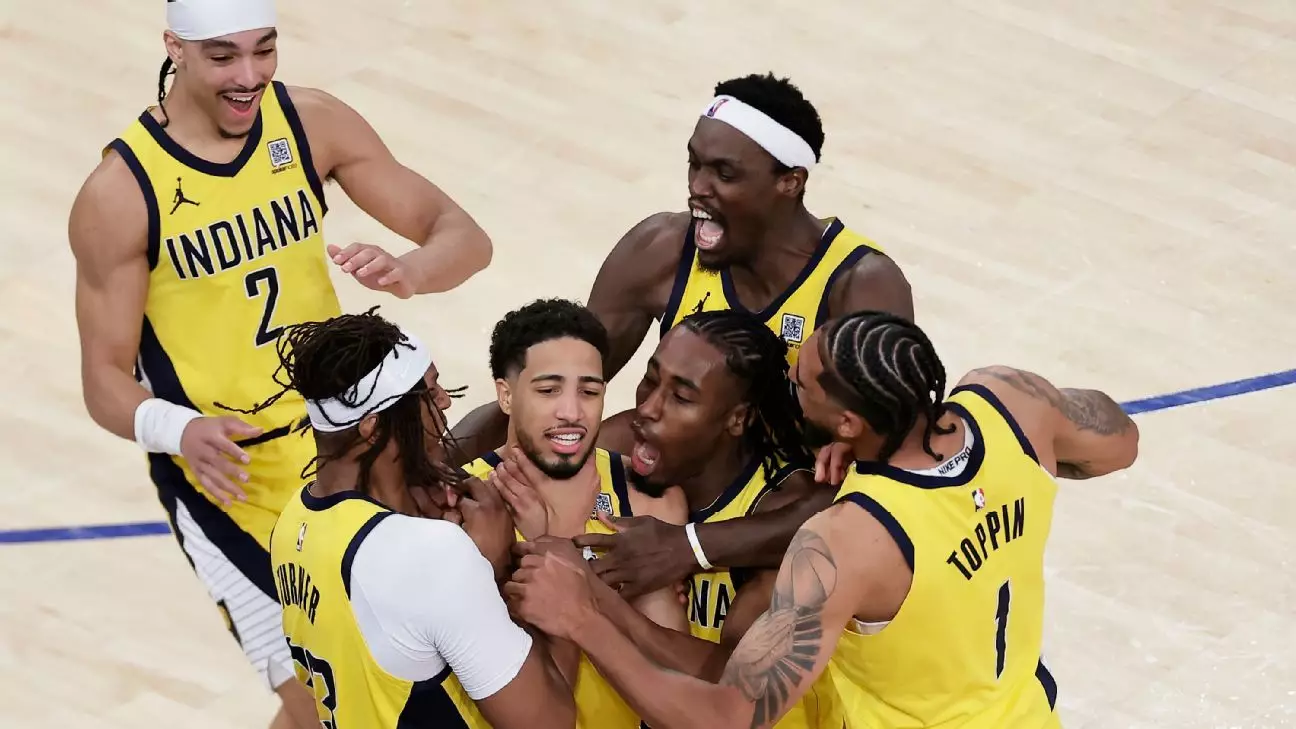On a night that felt more like a high-stakes Broadway drama than a basketball game, the Indiana Pacers pulled off an astonishing victory that will echo in the annals of NBA history. With seconds ticking away and a 14-point deficit looming large, the Pacers orchestrated a comeback that had everyone questioning the very nature of momentum in professional sports. The New York Knicks, who were reveling in their biggest playoff moment since the dawn of the millennium, collapsed spectacularly, relinquishing control of a game that seemed all but won. This wasn’t just a loss; it was a glaring indictment of both ill-preparedness and complacency.
The Anatomy of a Collapse
The Knicks, powered by Jalen Brunson’s mesmerizing 43-point performance and a robust supporting cast, were riding high as they built a sizable lead. Their defense should have suffocated any sign of a Pacers rally; instead, it became a mirage—a fleeting apparition that evaporated in plain sight when it mattered most. With Brunson sitting due to foul trouble, one would expect a well-coached team to fortify its lead. Instead, the Knicks appeared to forget the most elementary rule of competitive sports: the game isn’t over until the final horn sounds.
Statistically, the odds were overwhelmingly in their favor. They had never lost a game after leading by over 14 points in the closing minutes—it was a streak that stretched back to the dawn of tracking such data. But here they were, standing at the precipice of historical disappointment. The crushing truth is that success in sports requires not just talent but also mental fortitude, an element that the Knicks displayed only in fragments.
The Pacers: A Lesson in Resilience
On the flip side, the Pacers’ resilience and tenacity serve as a powerful reminder of the unpredictable nature of sports. The electric atmosphere in Madison Square Garden turned on its head when Aaron Nesmith lit up the scoreboard with a barrage of three-pointers, closing the gap as if fueled by an otherworldly energy. Tyrese Haliburton’s game-tying shot was not just a basket; it was a statement—a reincarnation of Reggie Miller’s famed choke signal that stirred the memories of a bygone rivalry. NY fans fully expected a decisive victory, but the Pacers taught them otherwise.
Perhaps what’s most admirable about the Pacers’ performance is the absence of panic. They were down, yes, but they didn’t succumb to despair. In a league so often dictated by the hot hand or shining star, the Pacers displayed a collective will that proves teamwork trumps individual brilliance when it counts. Every player contributed to this astounding turnaround, and Andrew Nembhard’s decisive basket in overtime encapsulated the spirit of this rally—a team that rose from the ashes of defeat.
The Bigger Picture: Rivalries and Historical Resonance
This matchup isn’t just another game; it’s a clash of historical legacies. The Knicks and Pacers have long been rivals, each encounter layered with cultural significance and unrestrained passion. Such narratives deepen the intensity of competition and draw spectators not merely to the score, but to the stories unfolding within. The contrasting fates of these two franchises elevate this game into a larger discourse about ambition, expectation, and the fragility of success.
While Knicks fans may find solace in the brilliance of Jalen Brunson, they must also grapple with the jarring reality that to expect a championship, one cannot let complacency slip into the fabric of strategy. The franchise’s hope for a bright future now feels overshadowed by this traumatic loss, a stain that remains on the psyche of New York basketball.
In the throes of disappointment, there lies an opportunity—a chance for the Knicks to reflect and learn. As for the Pacers, their victory is an affirmation that fear can be conquered, paving the way for not just this series but potentially a deeper playoff run. In the grand tapestry of the NBA, this game will be remembered not just for the highlights, but as a crucible where resilience was tested and ultimately triumphantly displayed.

Leave a Reply